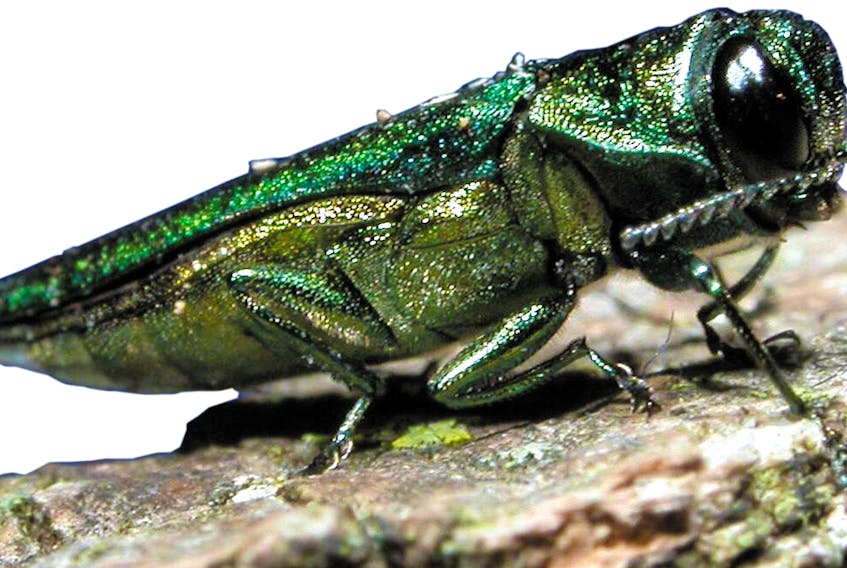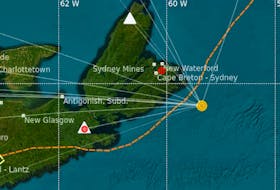TRURO, N.S. — A couple of insect species now in Nova Scotia pose a threat to trees in Truro’s parks and the community's lawns.
Andrew Williams, urban forestry coordinator for the town, is warning people of the damage that can be done by the emerald ash borer and the hemlock woolly adelgid.
“The hemlock woolly adelgid has the potential to dramatically change the look of Victoria Park,” he said. “The lower park is mostly eastern hemlock and some areas are pure hemlock. We could lose all of them.”
The species, which is believed to have come from Asia on infested plants, showed up in Virginia in 1951 and has been establishing itself along the eastern coast. It was confirmed in Nova

Scotia – Yarmouth, Digby and Shelburne counties – in 2017.
“It’s difficult to identify in early infestation stages,” said Williams. “Eggs are laid in the upper canopy and they’re very small. Even the adults are so small they’re easily moved by winds, birds, people and animals.”
Eggs are laid in white sacs that resemble tiny cotton swabs. When nymphs emerge they’re only one-thousandth of an inch long but they’re deadly to the hemlock, from which they suck nutrients.
Williams noted several tree stands in southwestern Nova Scotia are infested and large numbers of trees have been killed.
“The adelgids cause such a problem because they haven’t co-evolved with natural species,” he said. “There’s nothing to keep them in check.”
Another highly dangerous insect that’s getting closer is the emerald ash borer, also known as "the green menace." It was found in Bedford this spring.
“It has the potential to wipe out all ash species in North America,” said Williams. “Dutch elm disease has tapered off now and we still have elm trees. The emerald ash borer could have much worse effects.
“People need to understand why we’ve had signs up for several years, warning about moving firewood. Moving wood may seem pretty innocuous but that’s often how the emerald ash borer gets to places.”
The insect, native to East Asia, is believed to have arrived in North America in wooden packing materials during the early 1990s. It was confirmed in Bedford’s DeWolf Park last year.
Emerald ash borers lay eggs on the bark of a tree. When they hatch, they bore into the bark and feed.

According to a Natural Resources Canada fact sheet, up to 99 per cent of ash trees are usually killed within eight to 10 years of the beetle arriving in an area.
Traps have been up for three years to monitor for the insects in Truro, but none have been detected yet.
Signs of infested trees are dieback, bark splitting, D-shaped holes in bark, and shoots growing from the trunk and branches.
There is an insecticide that can be applied but it must be done repeatedly.
Studies are being done on introducing natural predators of the emerald ash borer, such as non-stinging parasitic wasps.
The loss of ash and hemlock would be devastating to some birds and other wildlife. The trees are often found near rivers, shading them from the sun and allowing cold-water fish like brook trout to survive. Losing trees from steep slopes, such as areas of Victoria Park, could cause slides.
Williams advises that anyone planting trees include a variety of species to prevent them all being killed by one insect or disease.
“We’ve got a lot of ash and hemlock right now and it would certainly change the look of the community if we lost them,” he added.
Anyone who thinks they’ve discovered a member of these invasive species should contact the Canadian Food Inspection Agency at 902-426-3874.
-
Adelgid generations
In North America, hemlock woolly adelgids are all females who reproduce asexually.
There are two generations each year. Progredientes hatch in early spring, can be winged or wingless and live about three months. Sistentes hatch in late spring and have no wings. They live about nine months.









